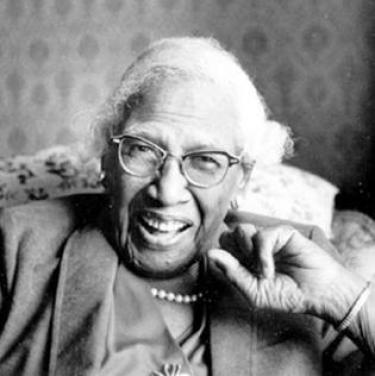"The Rio Grande Waltzes," by Rosina Corrothers Tucker

The Rio Grande Waltzes are five pages long and were published by E.F. Droop and Sons in 1902 (925 Penna Avenue, Washington D.C). The style of this piece resembles the Viennese waltz, divided into sections with an introduction, three waltzes, and a coda. These three waltzes are reminiscent of romantic era music, such as the last new phrase in waltz one (starting at the grazioso,) which is similar to the style of easier Chopin waltzes. During the 1900s, the Black community was striving to show more European sophistication in their art, which resulted in pulling influences from more 'retro' styles such as the Waltz. This is why Rosina choose to compose this piece as a Waltz as opposed to a more mainstream style of the time, where the rest of standard piano repertoire was beginning to move away from the Waltz.
Throughout this piece the melody and accompaniment can be seen in the same hand (usually right), with the left providing additional harmonies and rhythms. The third waltz and coda are the most difficult sections of this piece, which includes more difficult note reading, with full chords or faster rhythmic octaves at opposite ends of the keyboard. Towards the end of the third Waltz, the left and right hand occasionally overlap, where the performer will have to adjust accordingly in order to maintain the proper harmonies and melodies. As there are many repeats throughout the piece the performer should take care to bring out different harmonies/melodies every time the same section returns.
Rosina Budd Harvey Corrothers Tucker (1881-1987) was born on November 4, 1881 in Washington D.C. Rosina’s parents, Lee Roy and Henrietta Harvey, were former slaves in Virginia who moved to Washington D.C. after being emancipated. Due to this, Rosina’s parents ensured that their children would have the opportunities they did not, and received access to proper nutrition and education. While in high school Rosina taught Sunday school at the Colored Baptist Church in 1897. She married James Corrothers, a poet and writer of short stories on black humor and folklore, in 1899. Rosina continued her musical work as the organist for Liberty Baptist Church and played classical music at the First Baptist Church in Lexington, where her husband James was the pastor. Following James Corrothers death in 1917 Rosina moved back to Washington D.C. as a government file clerk until she married B.J. Tucker, a Pullman porter in 1918. Following this Rosina helped organize the Brotherhood of Sleeping Car Porters, the first African-American trade union. Rosina spent the rest of her life working for civil rights and her union, organizing events like the March on Washington, giving lectures, testifying before the Senate, and narrating the 1982 documentary Miles of Smiles, Years of Struggle.
Sources:
- Rosina Tucker (Wikipedia.org)
- Rosina Tucker (Encyclopedia.com)
- Photo from Rosina Tucker
Performed by Reina Krumvieda.

